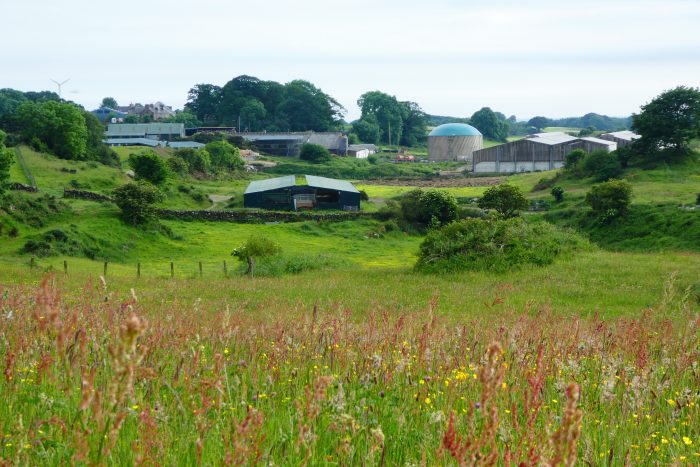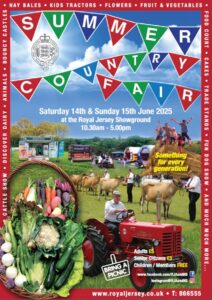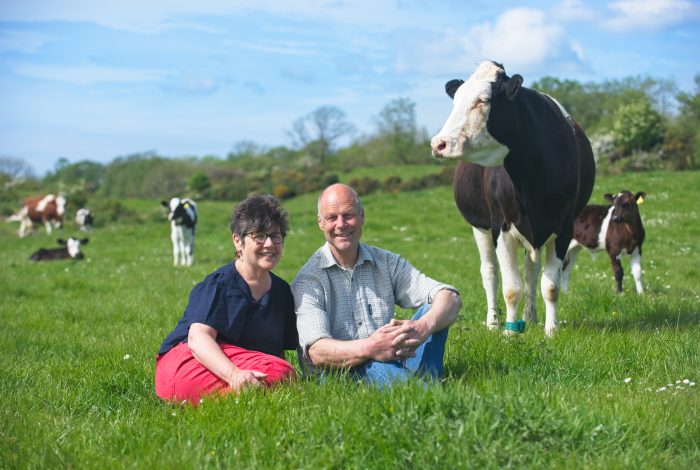
David and Wilma Finlay have a dairy farm in western Scotland: Rainton Farm, Gatehouse of Fleet, Castle Douglas, Galloway.
The intensification of dairy farming has been a concern of theirs for many years, so they have been working hard to come up with a different solution. In his words: ‘Our big idea? A new method of dairy farming that keeps the calves with their mothers to suckle. Our ethical dairy model is based around treating the animals, the land, our environment and the people who work here with respect and kindness’
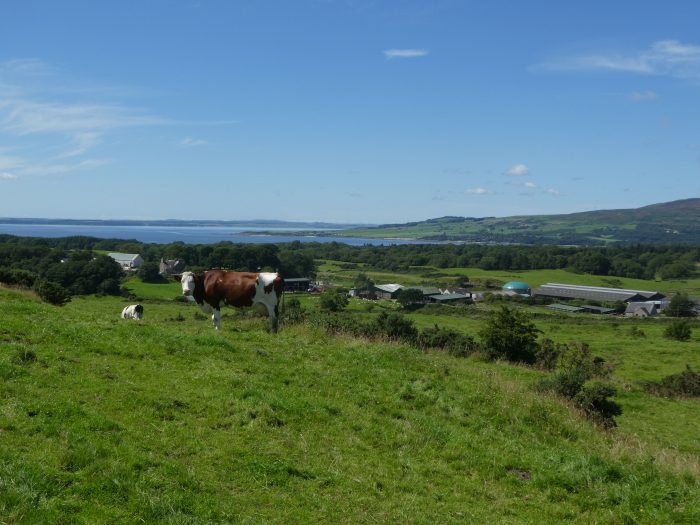
When Wilma and I set out on the road to make our fortune from running a farm shop and restaurant, an adventure playground and the manufacture of artisan ice-cream, we didn’t for a moment think we’d end up where we are today. How things can change!
I was the only son of a third-generation dairy farmer who’d gone into farm consultancy for ten years after finishing university. Wilma was a city-based, corporate, IT consultant with no farming background. An unlikely pair you might think. And yet we had at least one thing in common. We were grafters.
I’d returned home to our upland, traditional, dairy, beef and sheep farm to shake it up and bring it into the present day of hi-tech intensification. At the same time, Wilma was becoming disillusioned with corporate city life and dreamed of ‘getting away from it all’ to a small artisan business in the country. But it was just a dream. That is, until we met through a computer-based (this was before on-line dating, indeed before the internet!) dating agency.
At the same time Wilma was diagnosed with breast cancer. In those days the outcome was much less positive than it is today, and the diagnosis was deeply shocking. As often happens in times of self-analysis, these events were the impetus Wilma needed to make the break from her secure, well-paid job and to live out her dream.
It was on our second date that I popped the question, ‘Would you like to see my…, business plan?’ By sheer coincidence in my days of consultancy I too had a dream of diversifying the farm and adding value to our milk. And so it was that we started out on the journey that was a real roller-coaster, hugely stressful yet exhilarating. Costly and yet so rewarding. A journey that has turned my belief system completely on its head, but with an outcome that in the present day is so much of its time.
Back in the early nineties, in our bright-eyed and bushy tailed naivety, we were making our preparations. What product(s)? Ice-cream, cheese or yoghurt? Or all three? We travelled down to the recognised epicentre of dairy added value – Cornwall – to speak to farmers there about their experiences with the various products. We were far enough away in SW Scotland not to be a threat and the farmers were generous with their time and advice for which we were very grateful. In the meantime, some acquaintances along the road from us in Galloway had started a yoghurt factory, so that was out.
We had been making cheddar cheese on the farm when I was a youth which had involved long days and hard work. I was in no great rush to go back there. And anyway, artisan cheesemaking wasn’t easy. It took experience and a lot of skill which neither of us possessed. Ice-cream making, on the other hand, just needed a good recipe and some machinery and a consistent quality product was guaranteed. So, ice-cream it would be, but without the chems. Just the ingredients you’d find in the average kitchen cupboard.
Next the market. We went round all the local hotels and restaurants asking if they’d buy a locally produced, farm ice-cream. There was almost universal approval. What about a farm shop? I was deeply uncomfortable with this idea. The public coming onto our farm, disrupting the peace and tranquillity, dropping litter and leaving gates open? I don’t think so! But Wilma prevailed. Just a wee shop and play area for the kids. It would be good marketing.
We’d picked a disused 17th century building to convert to the ice-cream dairy, grossly underestimating the room we’d need for storage of product and packaging, but hey ho! We got plans drawn up and fed them into the planning and funding grinder. We had a list of double figures of the agencies we had to go through before we finally were given the green light. They certainly didn’t make it easy, but that turned out to be nothing compared to the convoluted and bureaucratic hoops you have to jump through now. I’m surprised anybody does anything innovative anymore, and that could explain a lot.
At this time we were also getting the company image and packaging design sorted out and finding suppliers of the printed products, point of sale and headed literature. Then, most important, was the machinery and equipment. Nothing affordable was off-the-shelf. Small scale farm ice-cream was pretty unusual at that time so we had to source most of it piecemeal and cobble it together as best we could with advice from a couple of small-scale urban manufacturers.
We were ready to begin the building work, doing all the prep work ourselves through the glorious, late summer and early autumn of ’93, The builders arrived, two months late, in late autumn just as the weather turned for the worse. I did feel sorry for the guys with their coats flapping and faces wrapped in scarves against the driven snow as they re-built the wall-heads and roof we had dismantled earlier in perfect weather.
Our launch was to be at the Highland Show in early June 1994 and we were making ice-cream even as the builders were finishing the construction work. We joked that the ice-cream would be full of sawdust at the launch. A joke that almost blew-up in our faces when we tasted some of our quality, artisan ice-cream on the stand at the Food Hall of the showground. It tasted of diesel! ‘How the…?’
I remembered we’d used a diesel space heater to dry the floor paint at one point in the ice-cream production area and the burner had gone out pumping diesel fumes into the room. By great fortune, only one flavour had been contaminated and we replaced it in the tasting cabinet. Disaster avoided.
And so it was that The Cream o’ Galloway Dairy Company was launched. I’ll spare you the details – they’re in the book -, but the business grew slowly (never believe what the potential customers tell you when you do your market research!) until we began our farm conversion to organic. In the late 90s organic was all the rage and at that time all the organic milk was being sold into the liquid market in the UK. The big processors couldn’t get their hands on it, and we were one of only two manufacturers in the country. It was a marketer’s wet dream. Supermarkets were approaching us to manufacture for them. My daughter went round a London distributor’s customers and opened 40 accounts in 2 weeks. We were selling ice cream from Isle of Wight (never quite got to Jersey) to Shetland. We had to up our game. Substantially.
We borrowed a half mill and built new storage and office space plus vans and equipment. We were flying! But it didn’t last long. In February 2001 disaster struck. Foot and mouth disease broke out and the countryside – our shop, playground and most of our customers – shut. We were in melt-down. It was like Covid lock-down, but just for rural folk. Town and city folk went about their normal lives and watched the mayhem on their telly. We had to decide. File for bankruptcy or keep going. We re-scheduled our loan re-payments, cashed our life policies and pulled in some family loans. By the time we were able to go back out to our customers in 2002/3, things had changed.
There had been a tidal wave of dairy farmers, disillusioned with the price of milk, converted to organic production and the market was awash with organic milk looking for a home. The big processors snapped it up, put on organic lines and were soon filling the market with cheaper organic ice-cream. We were getting squeezed into the fringe markets which was ok for a bit, but many farmers who were getting paid much less than promised for their organic milk began turning to making farm ice-cream. Our customers began drifting to a more local product. Something had to be done.
Fair Trade products were the new kids on the block. What about a Fair Trade organic ice-cream? The ingredients were very hard to source so the big boys would have difficulty getting the volumes they’d need, and it was too much hassle for the average farmer producer. Our customers were keen, ‘Bring it on.’ they said. Through 2007, with agreement from the Fair Trade Association, we set up a new brand – Made Fair -, developed a tasty new range of flavours and a lovely product image for the packaging, point-of-sale, leaflets, etc. Our customers loved it! With several years’ worth of packaging (minimum orders!) we were fired up and ready to launch in the spring of 2008, …just as the economy was going into melt-down!
It was like hitting a brick wall. Everyone was trading down. No interest in added value niche products. We’d sunk about sixty grand into the project and hardly sold a single tub. That was another tough lesson. Small scale players in niche markets selling through third parties into a price sensitive market are very vulnerable.
At this time we were associating with a bubble of people worried about climate change, biodiversity loss, pollution, animal welfare and such like. Maybe we were just getting old, but we figured the days of ice-cream, tourism and playgrounds were numbered. We needed to re-focus on the things that were becoming a concern. We needed a product that encompassed the essence of the farm. A natural, fermented, whole food… no, not kimchi… cheese! Not just cheese but raw milk cheese!
And so began the next stage of the journey, into the land of ethical food. If we were going to stick with dairy, we’d need a new cow dairy and silage clamps as the old ones were no longer fit for purpose. We were trying to move the farming system towards what was described as a ‘closed loop’ food system, producing as much of our needs from within the boundaries of the farm. Being organic we’d stopped using fertilisers and weedkillers and had substantially reduced our need for drugs and drenches. We had a small turbine and some solar panels but we wanted to build an anaerobic digester to capture methane which would drive an engine to give us electricity and hot water. But there was something else.
For 20 years we’d been running farm tours and the level of ignorance about modern farming had never failed to amaze me. One comment that far exceeded the others from our visitors was, ‘Why are you separating the cows from their calves?’ And some people were clearly upset by this. Particularly women. This question was constantly directed at me from Wilma and our tourist manager (both clearly knew nothing about practical farming!) and my exasperated response was, ‘Are you trying to bankrupt me?’
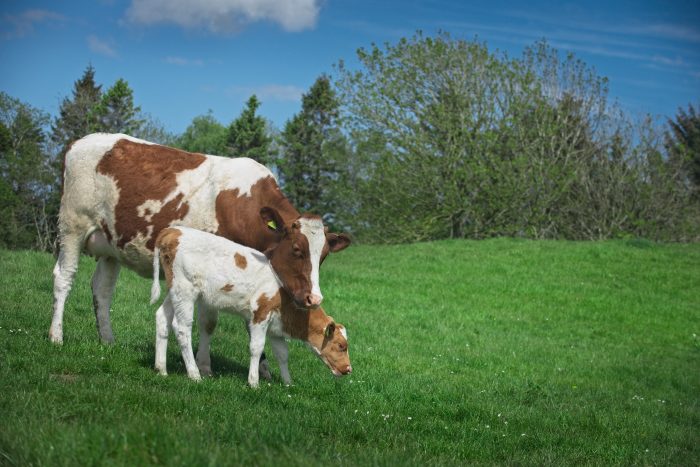
However, as we were planning a completely new dairy, for the sake of peace I agreed to cost out the price I’d need for my milk if we let the cows keep their calves and we milked them once a day. That, I thought, would put an end to the matter. The result really surprised me. It appeared, at least on paper, that it might work! I hunted around to see if anyone else was doing this and found that the Dutch were doing something along these lines but on a smaller scale. Our tenth wedding anniversary saw us stuck on a train in the Netherlands on a day of sleet in mid-January on our way to visit some dairy farmers letting their cows suckle their calves. Who said farmers have no sense of romance?
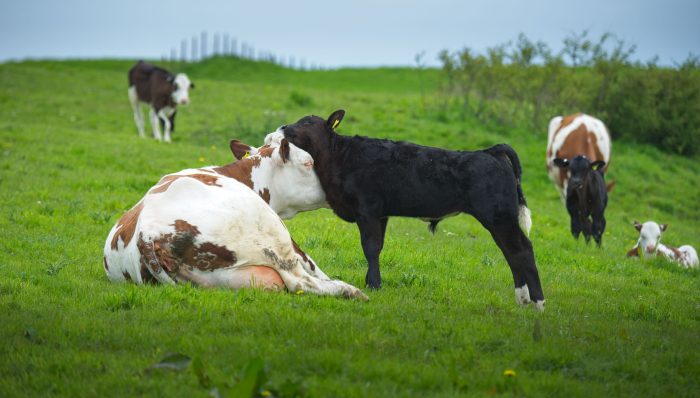
That summer we sent the rest of the farm team over to see the Dutch system and on their return agreed that it looked pretty simple. ‘Sure. We could do that.’ So we built that into the new dairy plans too and put them out to tender. One and a half mill! For 125 cows? No way. But, we were lucky to secure an EU grant of about one third, raised the rest through cashing pensions, passing the hat round the family (again) and from private funders. We didn’t go near the bank as it would have scared them off completely. Oh! And we built it ourselves. Took us four years but saved us a quarter mill.
And here we are today: built the new dairy complex; eventually (and painfully) cracked cow-with-calf dairying; converted an old barn into the cheese dairy (that took another three years DIY); are selling raw milk cheeses (and our beef) into London direct to our customers (well, most of it) and have inched ever closer to the holy grail of a closed-loop food system. But that is another story.
See further, David’s website: www.theethicaldairy.co.uk
